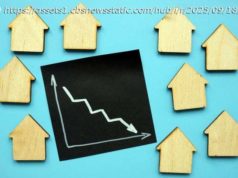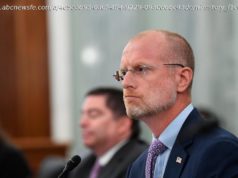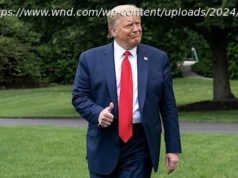Stocks dipped Wednesday on renewed worries about an escalation of US-China trade tension. But some experts said focus more on the Federal Reserve. More Fed rate hikes could end the bull run and slow down the economy.
Stocks slumped Wednesday because investors were worried about new tariffs imposed on China by the United States.
But the biggest fear facing US investors shouldn’t be growing global trade tensions. It should be rising interest rates.
« The Fed is more likely to kill the bull market than a trade war, » said Emily Roland, head of capital markets research for John Hancock Investments.
The central bank raised interest rates twice this year and many experts predict two more hikes before the end of 2018. Several more increases are expected in 2019.
Roland noted that the Fed remains « data dependent » under new chief Jerome Powell, just as it was under his predecessors Alan Greenspan, Ben Bernanke and Janet Yellen.
In other words, the Fed isn’t going to act because of political news. It will make moves based on what’s going on in the economy, especially with regards to the job market and inflation.
That means that the Fed is likely to keep raising interest rates until there are firm signs of a slowdown. There aren’t too many just yet. But it also means that the Fed may help cause that slowdown.
Steady increases in the Fed’s key short-term rate will make it more expensive for companies and consumers to borrow money. That could eventually lead to a slowdown in sales and earnings growth for corporate America.
There’s another worry. The Fed’s benchmark federal funds rate is currently 2%. That’s not far below rates for longer-term US Treasury bonds like the 10-year and 30-year, which have yields of about 2.9% and 3%.
If the Fed keeps raising short-term rates and long-term rates don’t nudge higher, this gap could narrow further, creating what economists call a flattening yield curve.
There are even concerns that rates could flip. Short-term yields could wind up being higher than longer-term rates, a phenomenon known as an inverted yield curve.
Ryan Detrick, senior market strategist at LPL Research, points out that the yield curve has inverted each time before the last nine recessions.
The yield curve may not wind up inverting. But the mere fact that it is flattening because of the Fed’s rate hikes could be enough to spook investors.
« Before trade wars were on anyone’s mind, the most common fear of investors was rising interest rates, » said Craig Birk, executive vice president of portfolio management with Personal Capital, an investment management firm, in a report this week.
« A flatter yield curve does create headwinds for growth, including less incentive for banks to lend, » Birk added.
The good news is that overall rates remain low. Birk said there’s a big difference between the Fed raising rates when they are at just 2% as opposed to about 5% before the 2007 Great Recession began and 6% at the height of the 1999 tech bubble, because there’s still a lot of room for rates to go up.
Still, John Hancock’s Roland said she’s a little nervous that the US economy may eventually slow because of rate hikes, even as many companies continue to get a boost from tax cuts in Washington. And any pullback in the US could bring down global growth.
« How long can the US prop up the rest of the world? It may not be for much longer, » Roland said.






